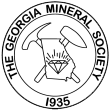GMS Field Trip December 2023
If you have any questions about field trips send email toGMS Field Trip
Mississippian Marine Fossils and Geodes in Tennessee
Saturday, December 2, 2023
Looking for a fun and educational adventure where you can collect fossilized coral, crinoids, and geodes, and have a cookout party every night? Look no further than the recent trip co-hosted by GMS and the Knoxville Gem and Mineral Society! Thanks to the owner of a local hotel, we were fortunate to have a whole hotel to ourselves, complete with a private patio and grill. The fun began the night before the trip with grilled hotdogs, homemade coleslaw, cheeseball and crackers, chips, brownies, oranges, bananas, and apples. And, of course, we toasted marshmallows!
The next day, a junior member asked about the age of the fossils we were going to be collecting. I explained that the fossils are from the Mississippian period, making them approximately 323.2 to 358.9 million years old. We also discussed that crinoids are animals that look like plants, and even though many people think they are extinct, some species are still living today. My new junior friend diligently shared all of this information with members who arrived later.
At our first destination, members collected specimens of the extinct colonial coral Lithostrotionella, which is easily identified by its hexagonal corallites. Members also found brachiopods and oddly shaped concretions. Plus, we collected trash as a “thank you” to the owners of the property and because that is what we do. Our next destination was the crinoid site.
The crinoids in the area had a long stem with a cup-like structure at the top called a “calyx,” where the crinoid filtered food from the water, and a structure at the bottom called a “holdfast” that was used to anchor the crinoid. The fossils we find are mostly from the stem part of the animal, though members found a few calyxes and holdfasts. Stems tend to break into segments, so that is why they outnumber the other body parts. Although it is difficult to determine species or even genera from the stems, calyxes can help with identification. The most common genera represented at this site are Agaricocrinus, Alloprosallocrinus, and Eretmocrinus. An Agaricocrinus calyx looks like a mushroom cap with five pudgy legs. An Alloprosallocrinus calyx looks like a tiny, bumpy volcano. An Eretmocrinus calyx looks like a tiny, spiny volcano on a pedestal. Of course, finding a calyx is thrilling, but the stems are fun to find too.
The parts that make up the stems are called “columnals” and can be found individually or in stacks. Juniors like to look for columnals that we have given silly nicknames. Stems with tiny spines all around got the moniker spinoid. Oval columnals received the nickname ovaltine. In a nod to Dr. Seuss, stems with a star shape in the center were dubbed star belly sneetches. Similar to the star-bellied stems are the flowers that have the five-fold symmetry of a star but with rounded “petals.”
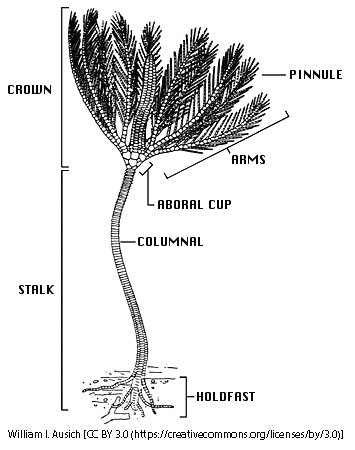 Why do stems have different shapes in the center? To answer this question, we must look at crinoid anatomy. There are two types of columnals: nodal and internodal. Nodals had “cirri,” i.e., thin, hairlike structures used for swimming or anchoring, and internodals did not. Short ligaments held internodals together, and longer ligaments held multiple internodals together between nodals. The ligaments are responsible for the pattern in the center part of the stem. Stems are more prone to breaking at nodals, which explains why we find mostly pieces of crinoid stems (Ausich WI, Brett CE, Hess H, et al., 1999). I learned about this part of crinoid anatomy while preparing this report.
Why do stems have different shapes in the center? To answer this question, we must look at crinoid anatomy. There are two types of columnals: nodal and internodal. Nodals had “cirri,” i.e., thin, hairlike structures used for swimming or anchoring, and internodals did not. Short ligaments held internodals together, and longer ligaments held multiple internodals together between nodals. The ligaments are responsible for the pattern in the center part of the stem. Stems are more prone to breaking at nodals, which explains why we find mostly pieces of crinoid stems (Ausich WI, Brett CE, Hess H, et al., 1999). I learned about this part of crinoid anatomy while preparing this report.
I also learned more about holdfasts. There are various types of crinoid holdfasts, and at this location, we have identified two types: one that wraps around other objects, and another that resembles the roots or branches of a tree. The wrapping kind are usually found encrusted around other crinoid stems, but they probably attached to rocks and other surfaces as well. The tree-like holdfasts consist of a stem with roots known as “rhizoids” (Morgan 9). Previously, I recognized only the wrapping holdfasts, thinking the others were simply branching stems. I am happy to have expanded my knowledge and look forward to applying it on future trips.
During the Mississippian period, crinoids were so abundant that there is a type of sedimentary rock called “encrinite” that is composed of mostly crinoid fossils. There is a lot of encrinite at this location that can be cut and polished for lapidary use. I saw several chunks of encrinite with stems and other bits and pieces on the outside, as well as beautiful blue-gray material on the inside. In addition, members found hand-sized clusters and plates of crinoid fossils.
After a quick potty break, we went to our final destination for the day to collect geodes. It was a great year for geodes, so members had no trouble finding them. Charles showed members how to crack open geodes with a hammer and chisel, but there were also many geodes that were already broken open. Most of the geodes contain clear to milky quartz crystals, but some have botryoidal quartz or quartz crystals with an orange-red coating. Daniel Miller found one with crystals that appear to have a black coating. In addition to geodes, members also found fossilized corals that were different from the corals we collected earlier in the day. Unlike the Lithostrotionella corals, these have very few distinguishing features other than a general shape. Some have voids filled with crystals, and others are mostly solid, so they are fun to collect too.
We ended the day with another cookout at the hotel. One member made bean quesadillas that warmed our hands as the rain we feared all weekend finally arrived. The rain did not dampen our fun, though. We continued enjoying some rockhound camaraderie while noshing on leftovers from the previous night and fresh goodies that members contributed for the second night. We even managed to toast a few marshmallows over the fading embers. To top it all off, Charles wire-wrapped some Ohio flint that one of the members brought for everyone.
Many thanks to the property owners who allow us to collect, and to the hotel owner who made staying overnight a part of the whole adventure. Thank you to the members who graciously contributed to our nightly cookouts, picked up trash everywhere we went, and brought specimens to me to photograph for this report. And, of course, thank you to Charles for organizing this trip and to Daniel Miller for helping to run it.
References:
Ausich WI, Brett CE, Hess H, et al. Crinoid Form and Function. In: Fossil Crinoids. Cambridge: Cambridge University Press; 1999:3-30. doi:10.1017/CBO9780511626159.003
Morgan, William. Collector’s Guide to Fort Payne Crinoids and Blastoids. Indiana University Press, 2021.
Lori Carter
On behalf of Charles Carter, Field Trip Chair
e-mail:
The First Night
Photos by Lori Carter
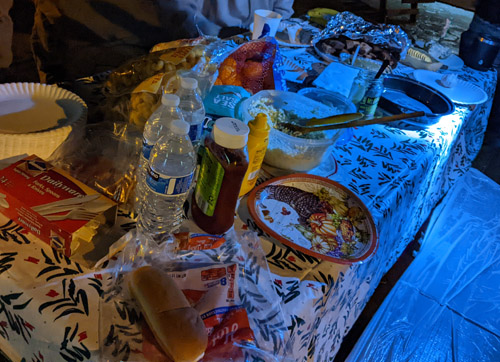

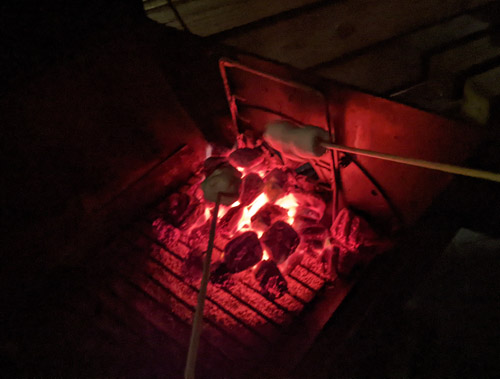
Grilling out the first night at the hotel
Location 1: Coral and more
Photo by Lori Carter
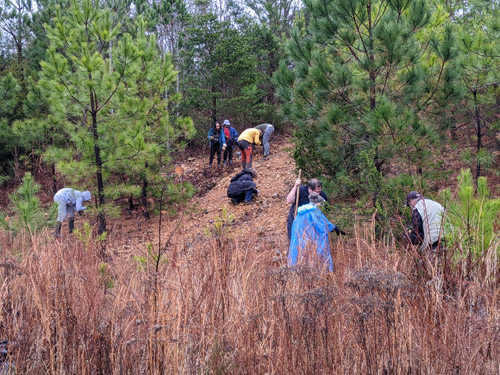
Digging for fossilized coral
Photos by Lori Carter
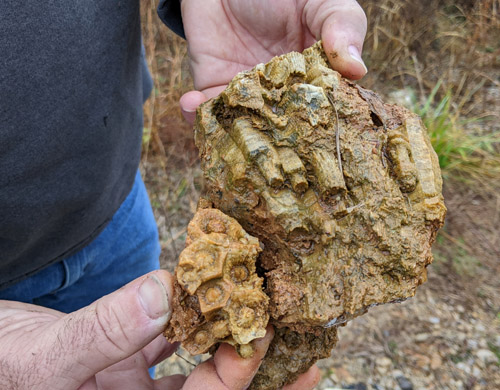
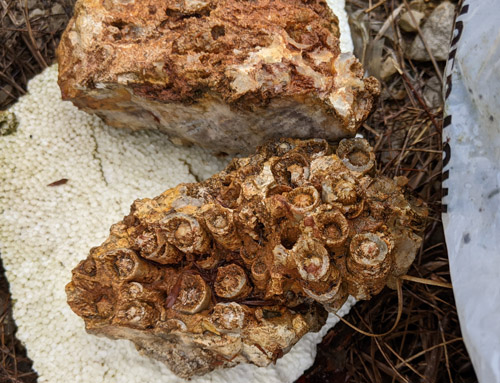
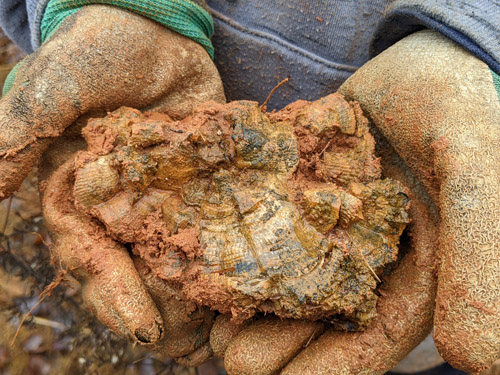
Lithostrotionella coral!
Photos by Lori Carter
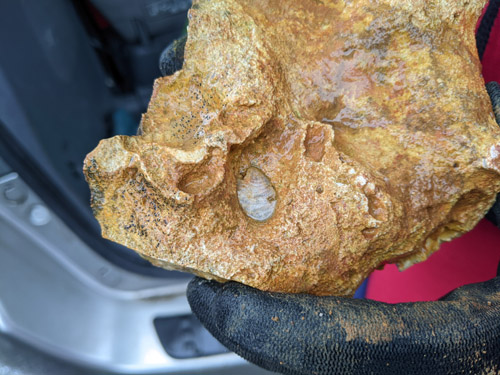

Brachiopod?
Photos by Lori Carter
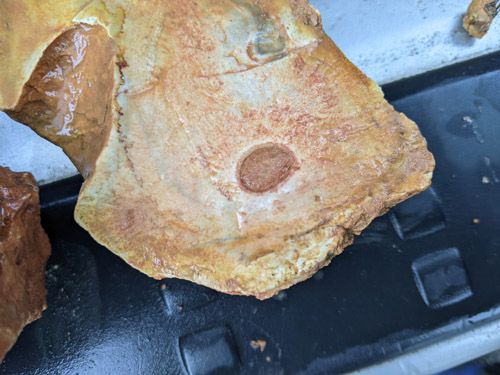
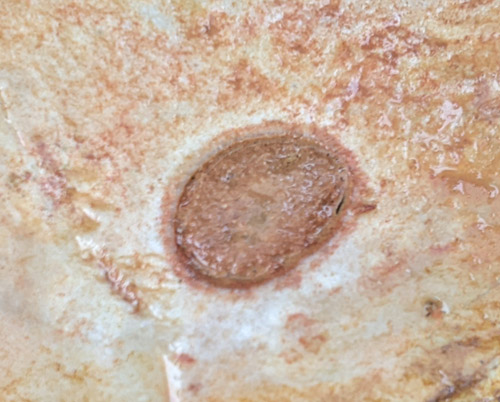
Not sure what this is...
Photos by Lori Carter


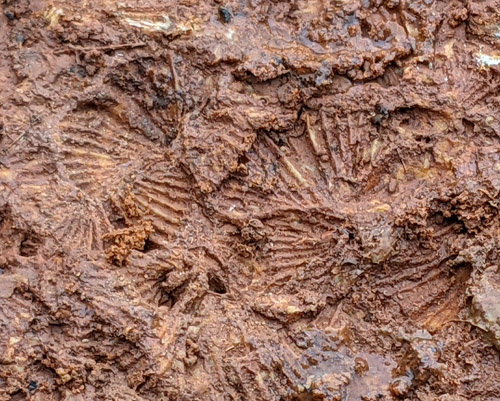
Packed with shell impressions!
Photo by Lori Carter

Another excellent shell
Photo by Lori Carter
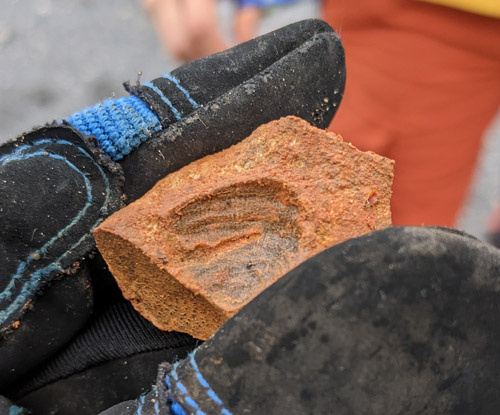
Another unidentified specimen
Photos by Lori Carter
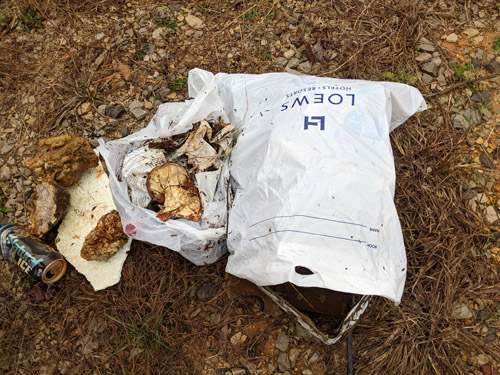
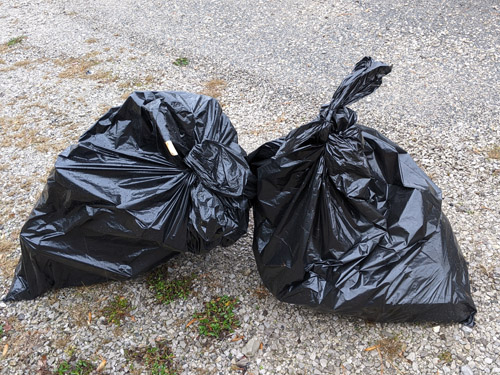
We found a lot of trash too
Photo by Lori Carter
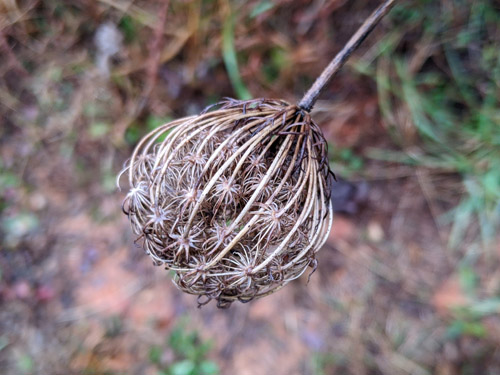
This plant reminded us of the crinoids we would be collecting later
Photo by Lori Carter
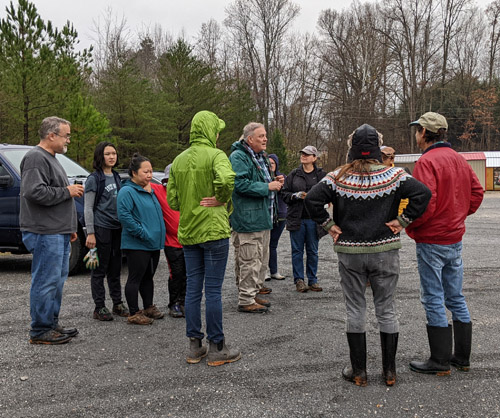
Charles explaining how to get to the next location
Location 2: Crinoids and other fossils
Photo by Lori Carter
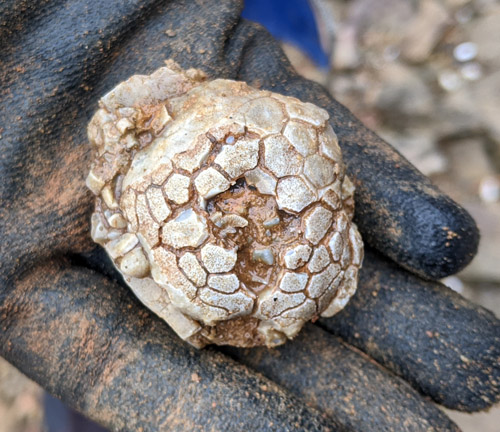
First calyx of the day! (Not sure what kind though...)
Photo by Lori Carter
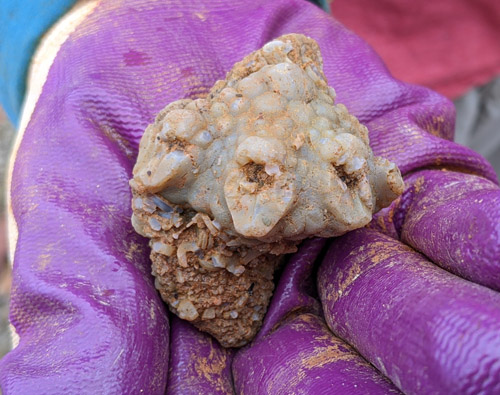
This calyx appears to be Alloprosallocrinus
Photo by Lori Carter

Not sure what kind of calyx it is, but it sure is cute!
Photos by Lori Carter

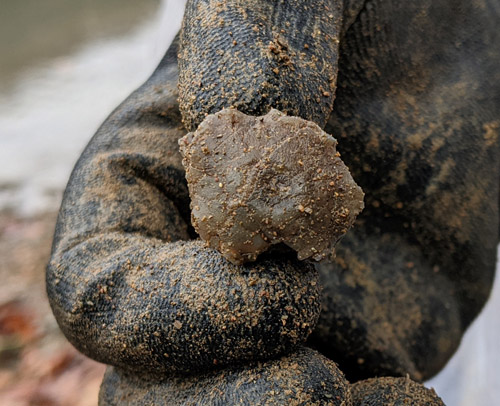
A junior found this gorgeous Alloprosallocrinus calyx
Photo by Lori Carter
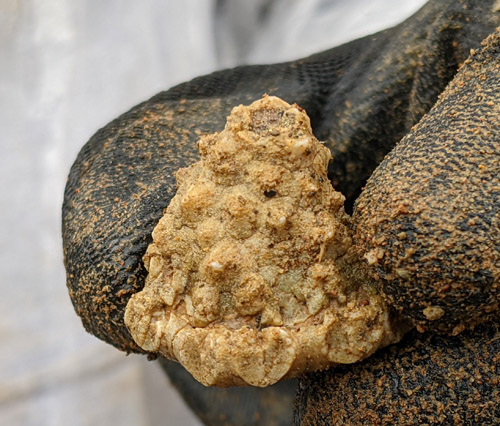
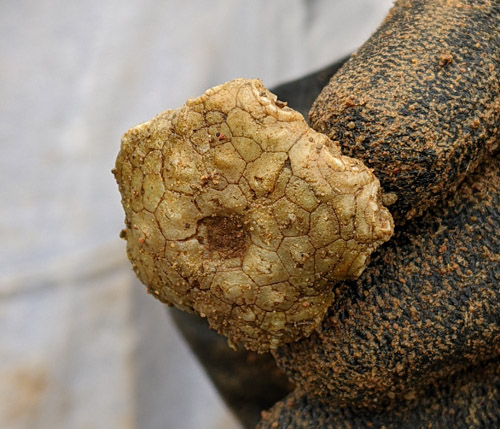
This Alloprosallocrinus calyx is beautifully preserved
Photo by Lori Carter
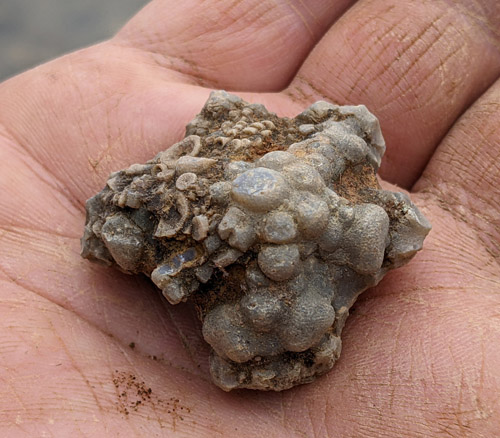
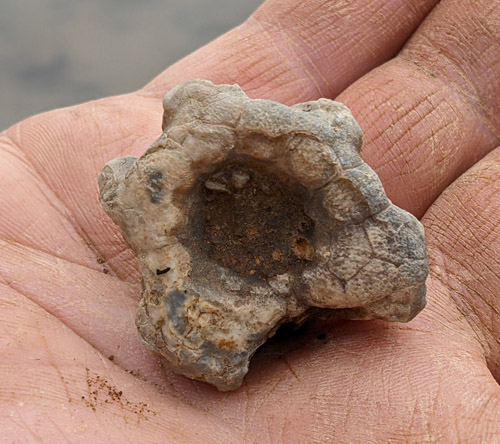
Nice little Agaricocrinus calyx
Photos by Lori Carter
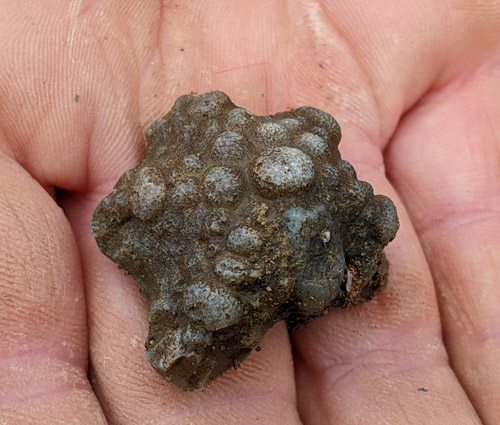
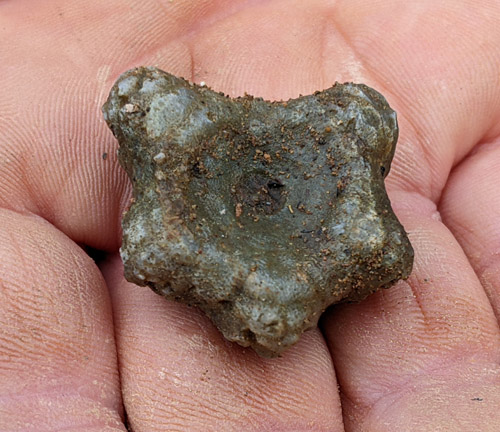
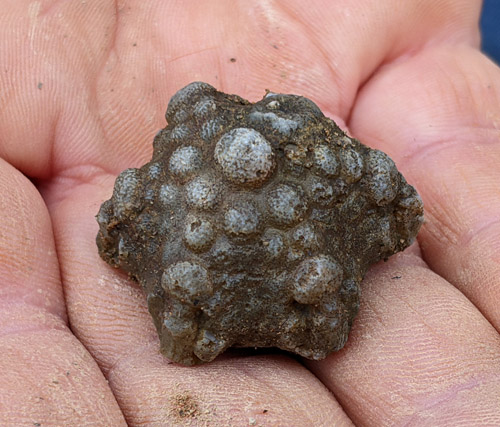
Another perfect Agaricocrinus calyx
Photo by Ken Scher
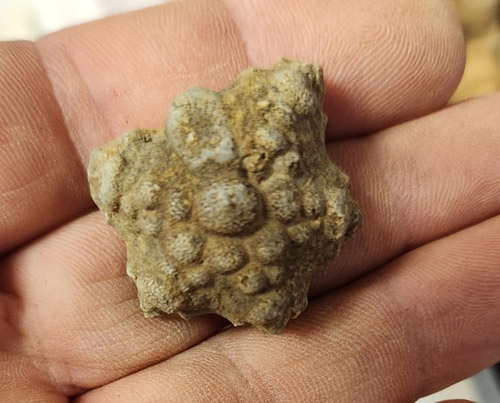
Agaricocrinus calyx after a bath
Photos by Lori Carter
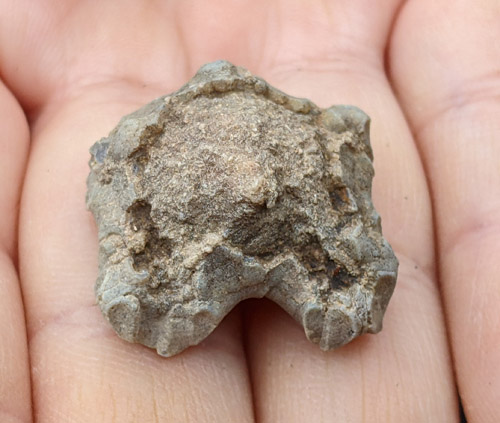
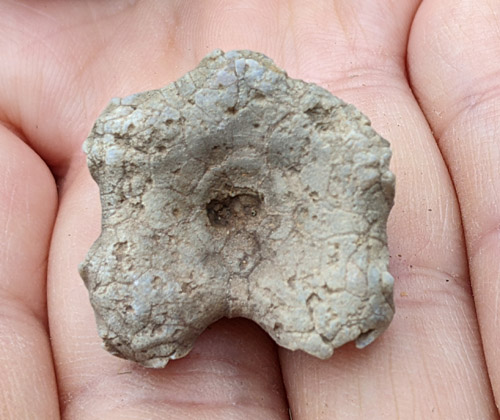
It is a little bit broken, but still an excellent Agaricocrinus calyx
Photos by Lori Carter

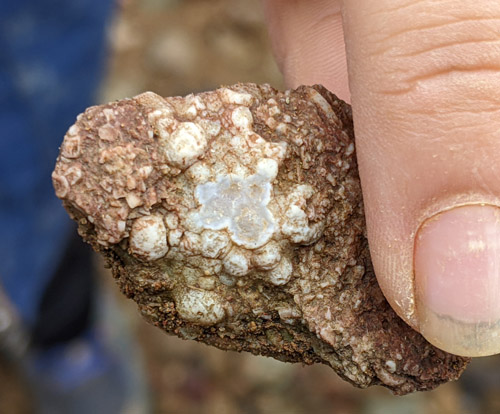
A calyx in matrix, probably Agaricocrinus
Where was the stem attached to an Agaricocrinus calyx?
Click HERE to see an excellent diagram of an Agaricocrinus crinoidthat shows the orientation of the calyx. You can see that the stem attached to the concave part
Photo by Lori Carter
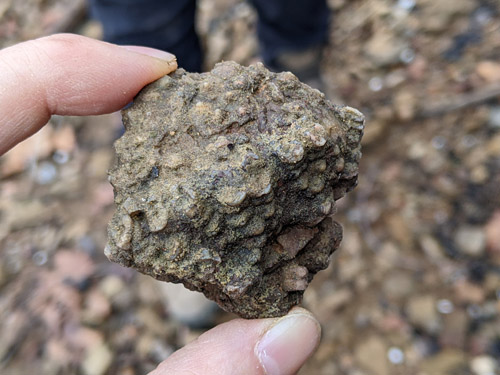
Possibly Eretmocrinus?
Photo by Lori Carter
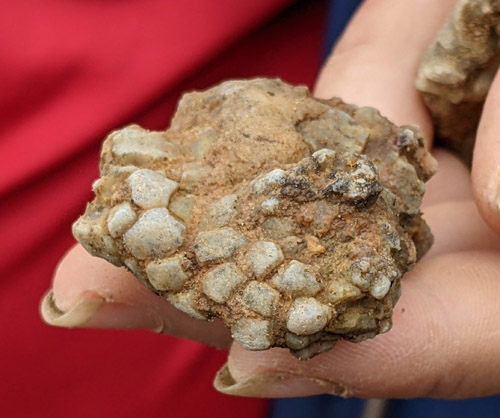
Squished calyx
Photos by Lori Carter
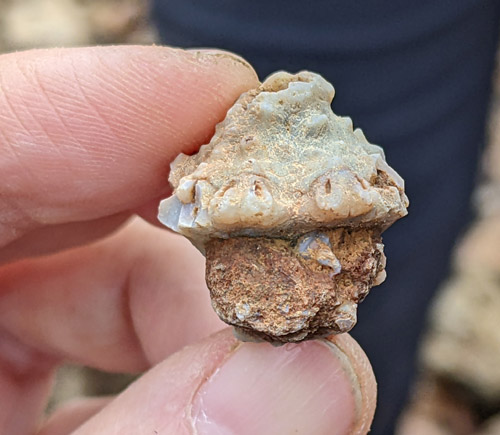
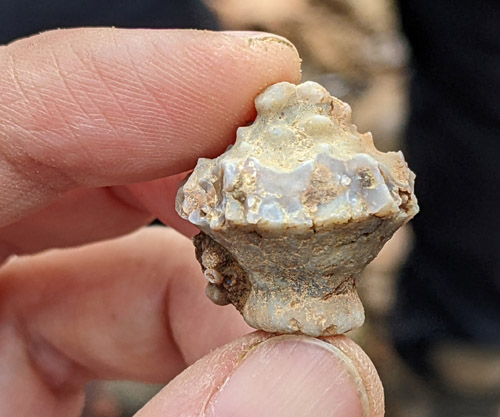
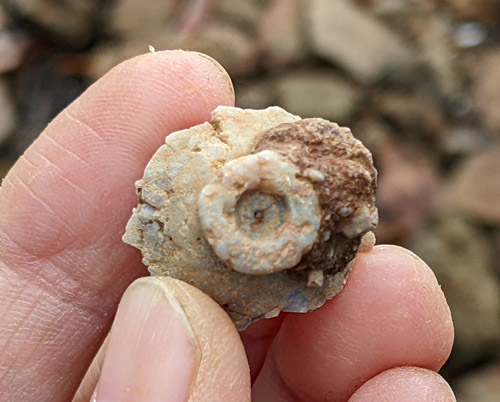
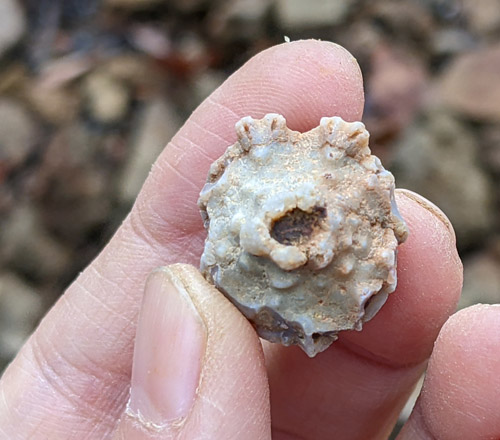
Eretmocrinus!
Photo by Lori Carter
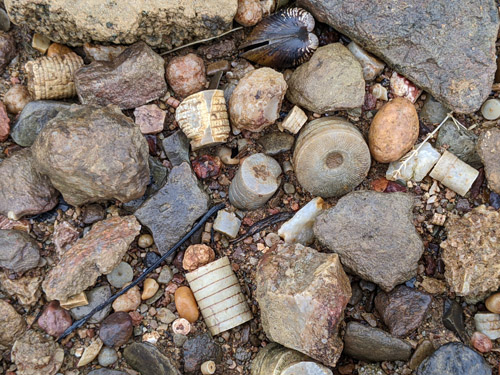
So many stems!
Photo by Lori Carter
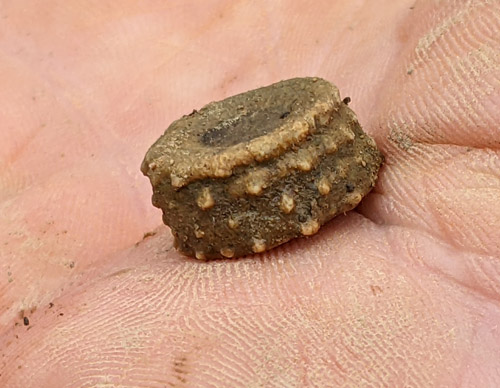
Nice little spiny, aka "spinoid", stem
Photos by Lori Carter


A sharp-eyed junior found this tiny columnal with a flower shaped center
Photo by Lori Carter
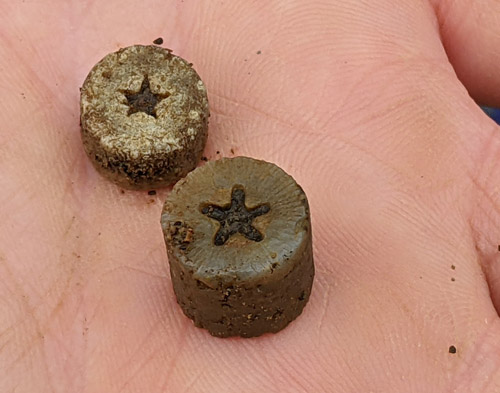
A couple of "star belly sneetch" stems
Photos by Lori Carter
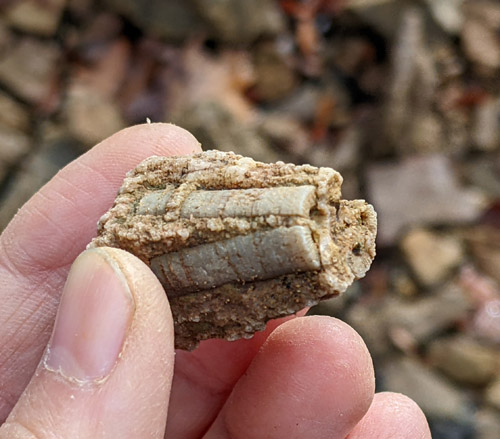

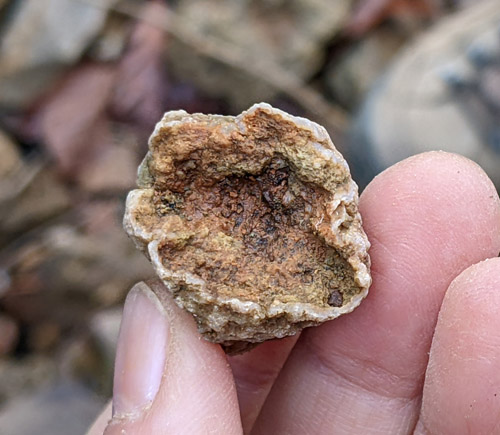
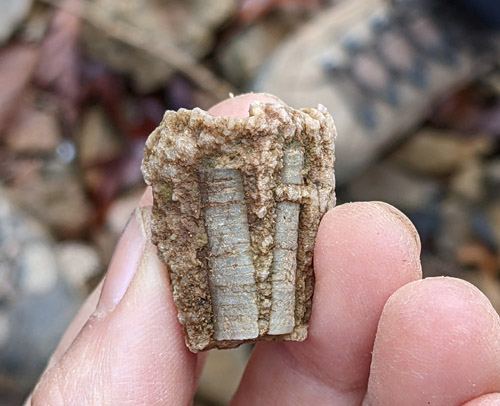
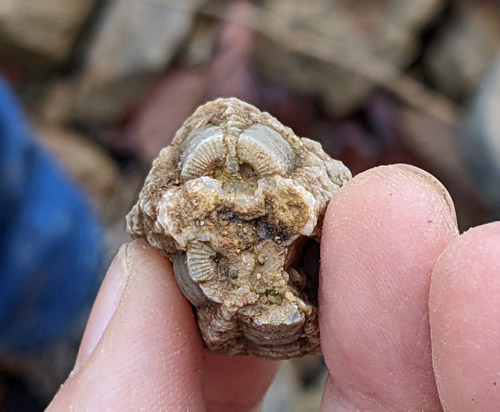
This stem was preserved in a broken state
Photos by Lori Carter
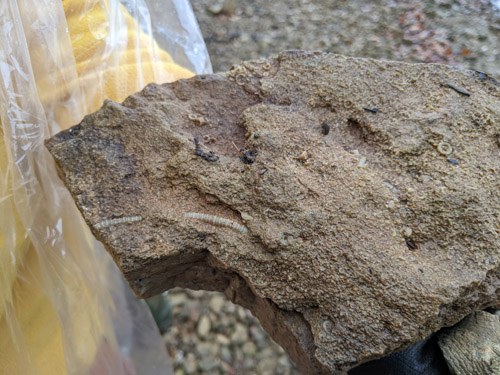
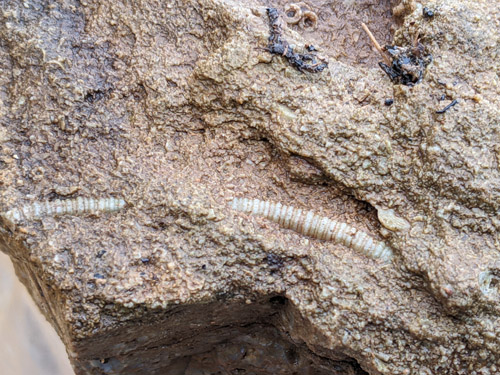
A rock chock-full of stems, including a long one
Photo by Ken Scher
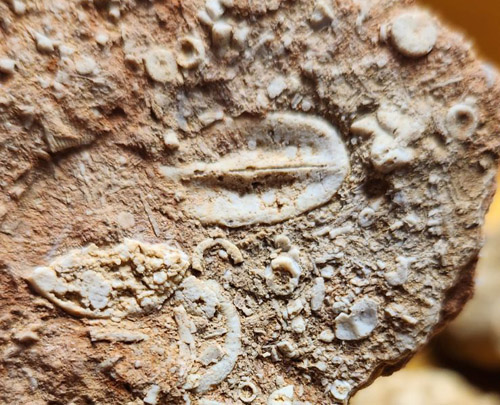
Perfect example of an oval columnal
It is probably from a crinoid of the family Platycrinidae
A stem composed of these would have been twisted into a loose spiral
Photo by Ken Scher

Unidentified specimen surrounded by columnals
Photo by Lori Carter
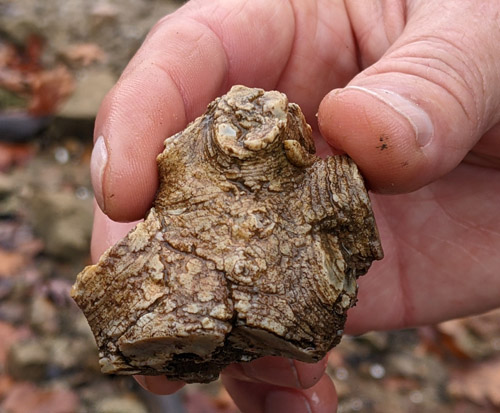
Holdfast!
Photos by Lori Carter
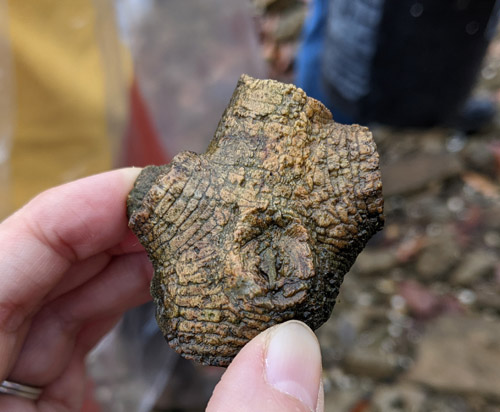
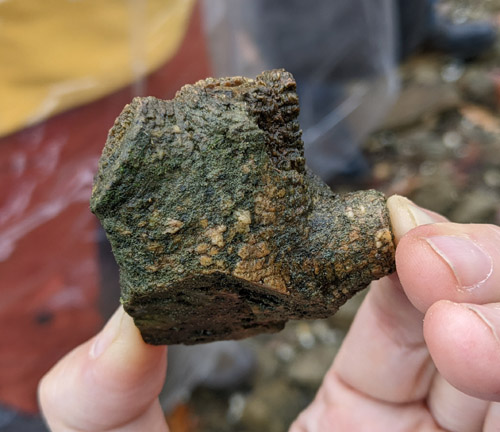

Holdfast with a star!
Photo by Ken Scher

Incredible holdfast in matrix
Photo by Lori Carter
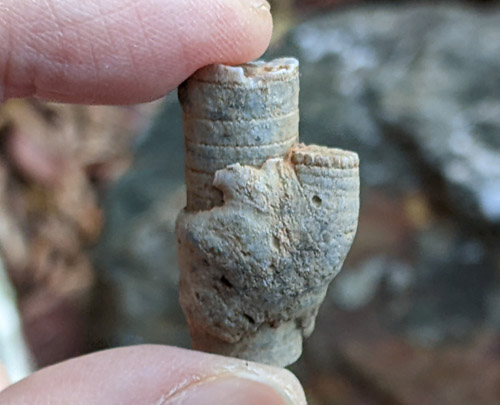

Encrusting holdfast
Photos by Lori Carter
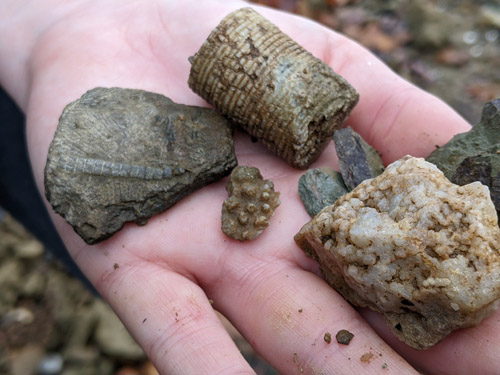
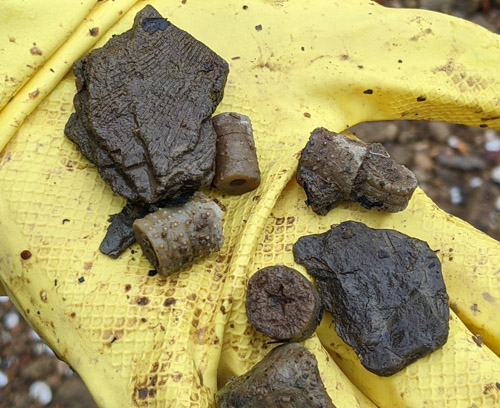
Assortments of goodies including stems and a bryozoan specimen
Photos by Lori Carter
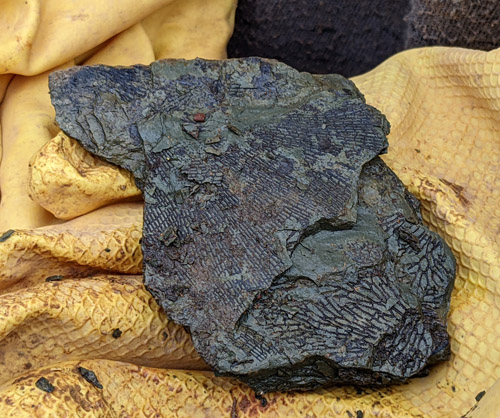
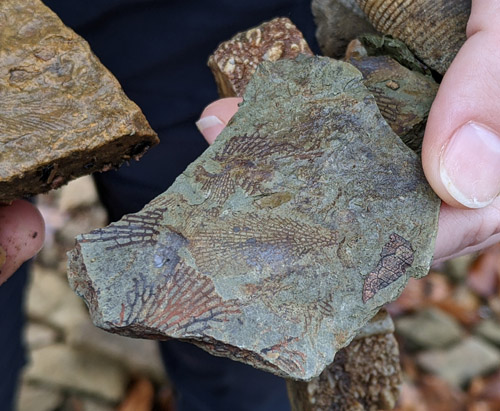
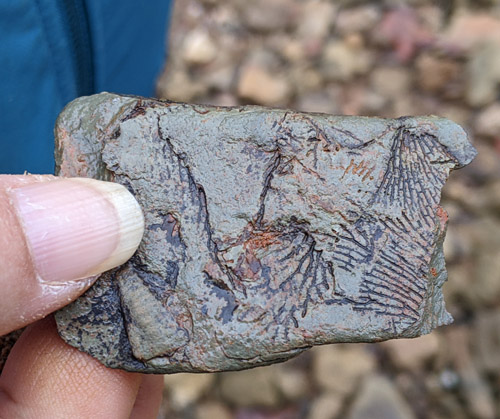
Bryozoans preserved in shale
Photos by Lori Carter
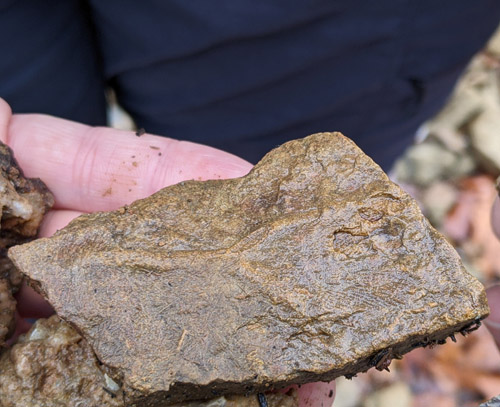
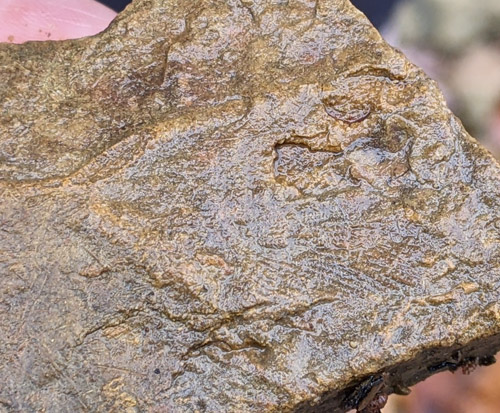
Possibly bryozoans?
Photo by Lori Carter

Nice brachiopod
Photos by Lori Carter
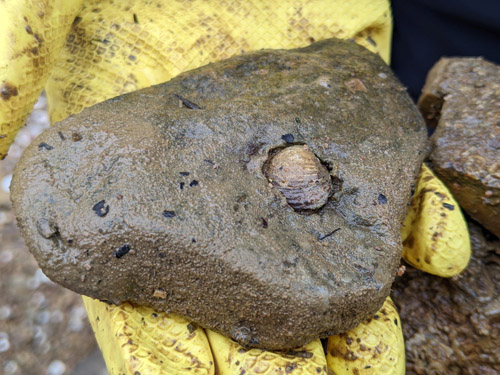

Some kind of shell embedded in a rock
Photos by Lori Carter
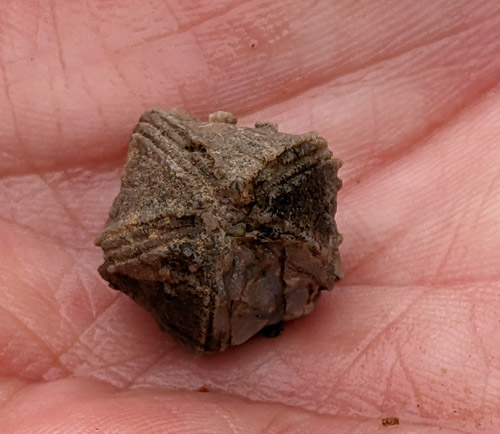
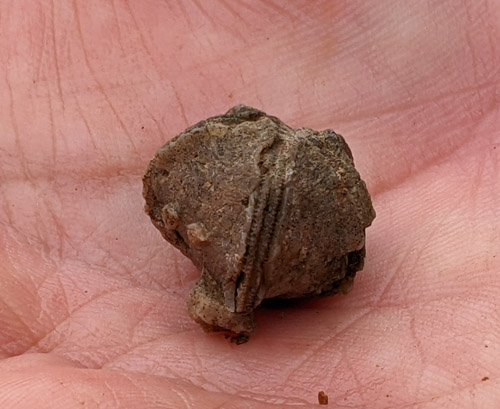
Cool little blastoid, an animal similar to a crinoid
Photos by Lori Carter
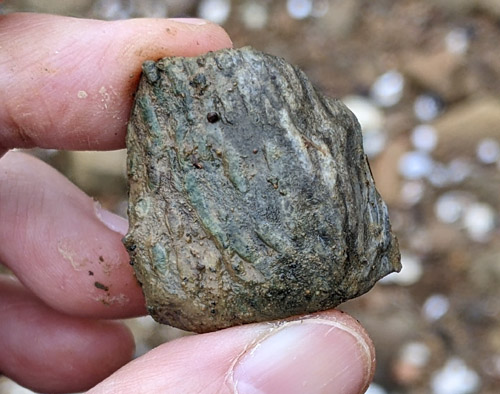
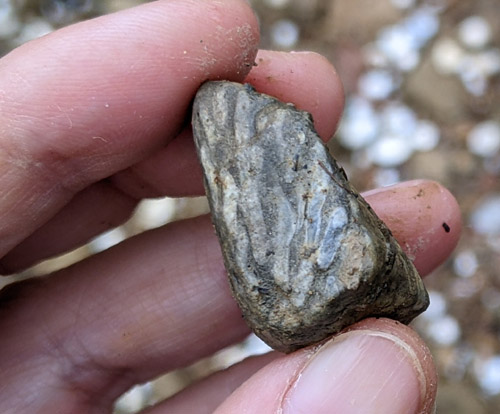
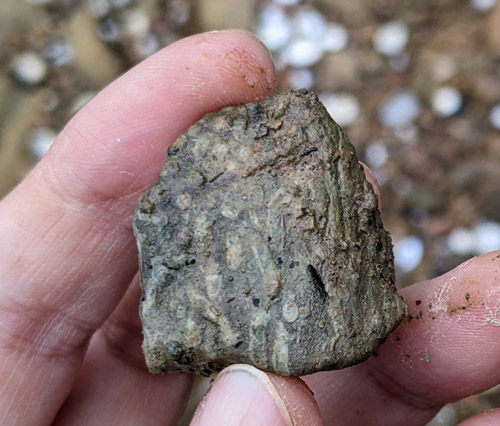
Unidentified specimen. Coral? Burrows?
Photo by Lori Carter

Collecting fossils in style!
Location 3: Geodes and more coral
Photos by Lori Carter
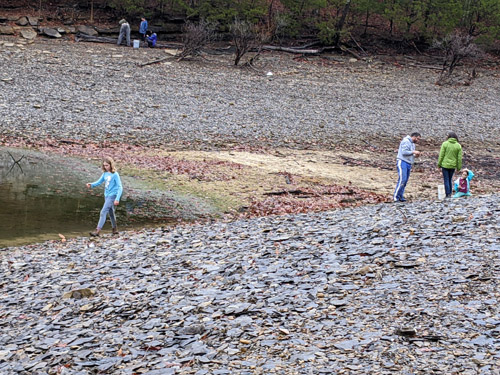
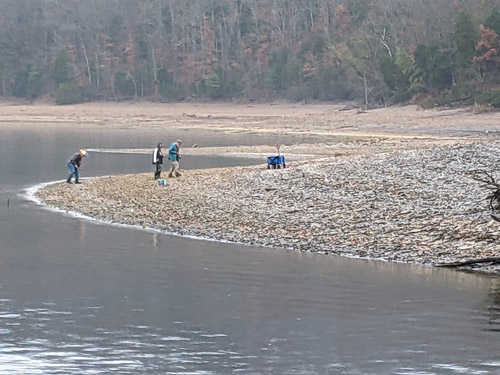

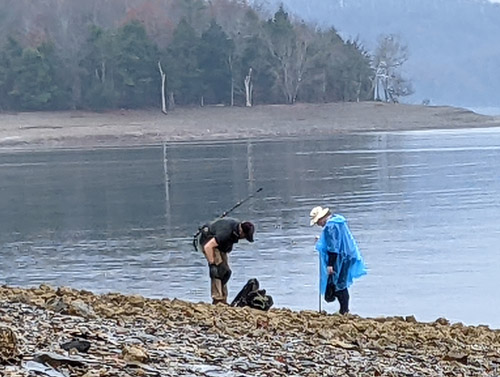
Let's look for geodes!
Photos by Lori Carter
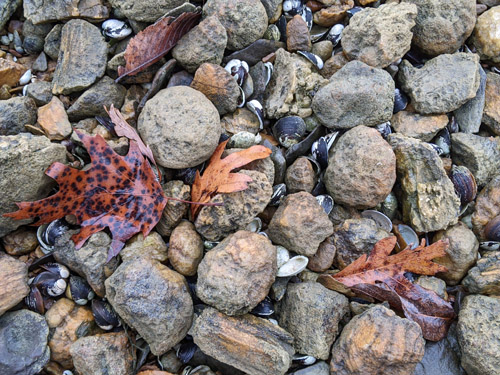
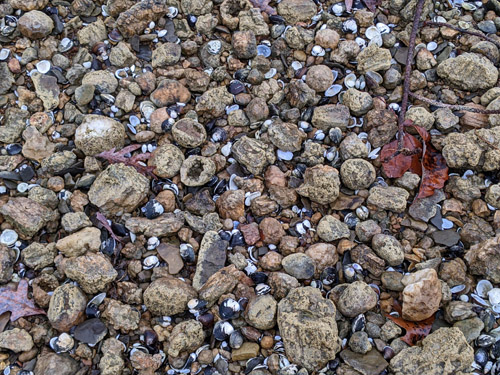
It wasn't hard to find geodes -- they were everywhere!
Photo by Lori Carter
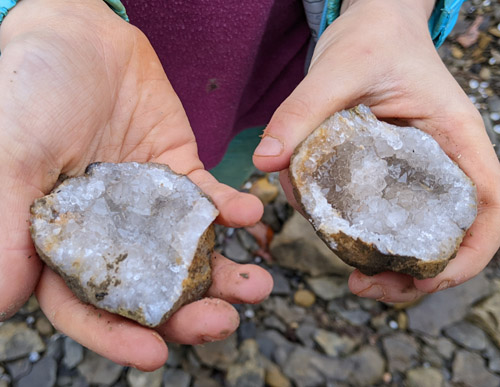
One of this junior's first geodes!
Photo by Lori Carter
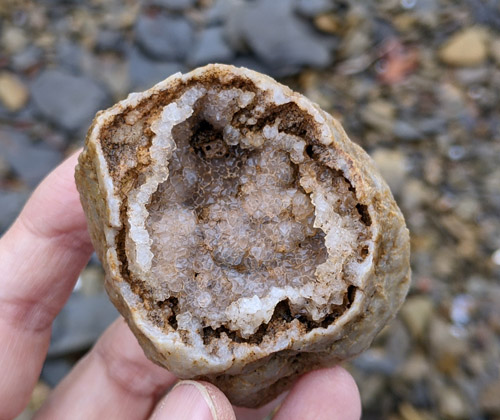
This one sort of has 2 rinds
Photos by Lori Carter
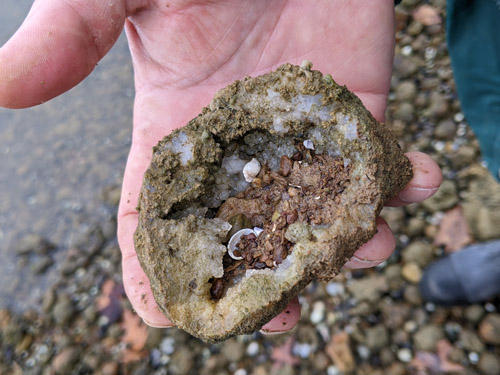
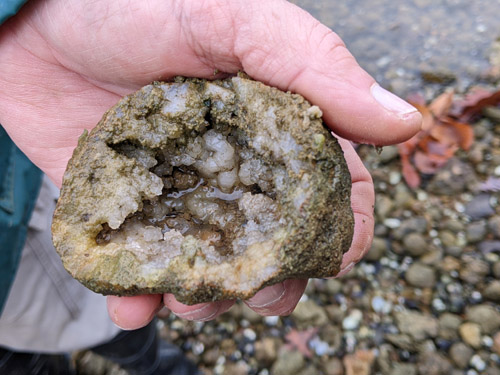
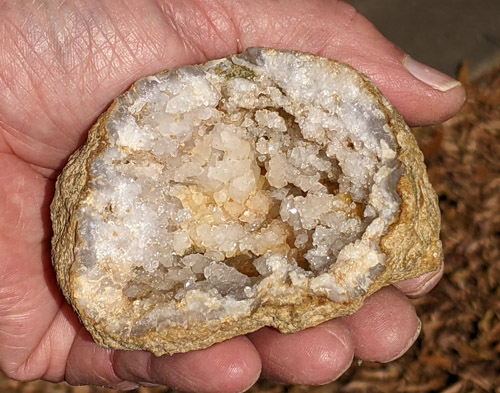
Straight off the ground, after a dip in the lake, and after a bit of cleaning at home
Photo by Ken Scher
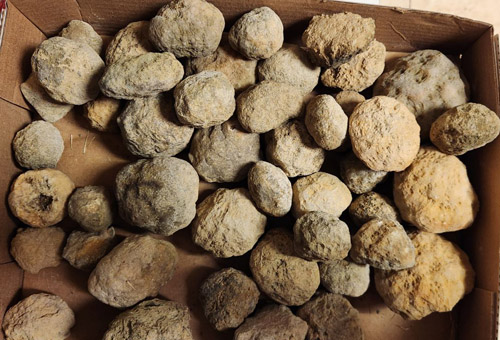
Box o' geodes ready to be cracked open
Photo by Ken Scher
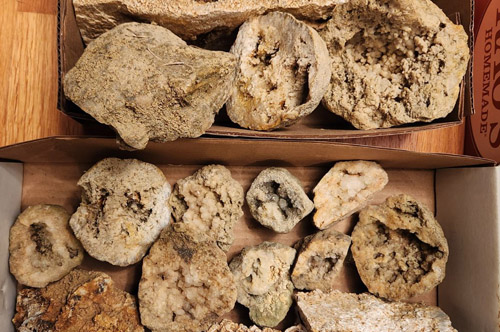
Box o' geodes already cracked open
Photo by Lori Carter
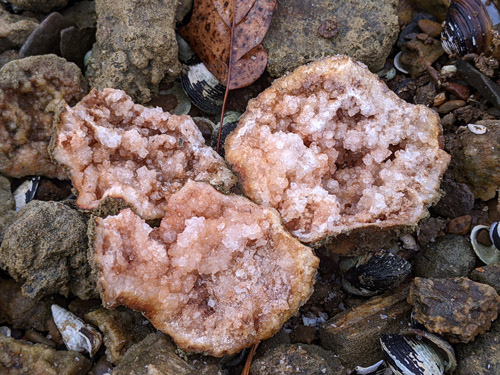
This geode broke into multiple parts...
Photo by Lori Carter
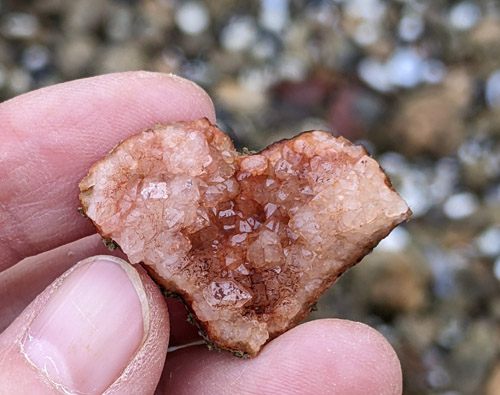
...including a sweet little heart
Photos by Lori Carter
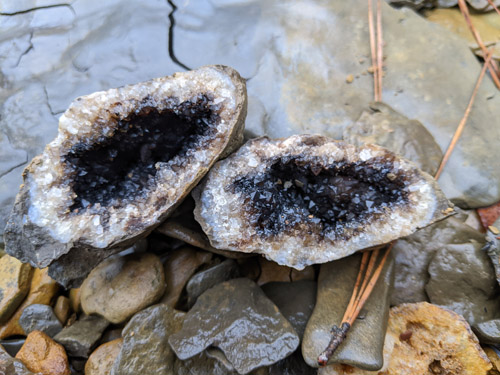


Daniel found this geode with dark crystals, probably a coating
Photo by Ken Scher
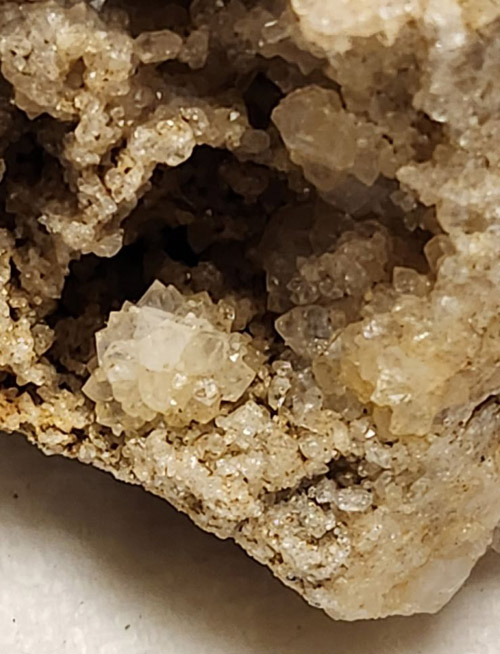
The cluster in the lower left is about 1/4 inch wide
Photo by Ken Scher
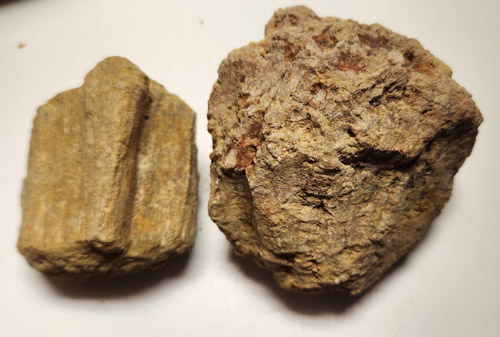
Examples of the coral at the third location
Photo by Lori Carter
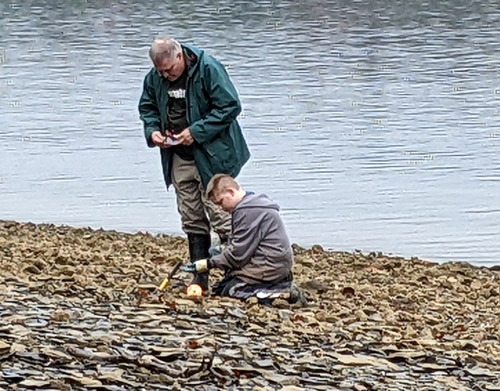
Charles getting safety goggles ready for a junior so he can show him how to break open geodes
Photos by Lori Carter

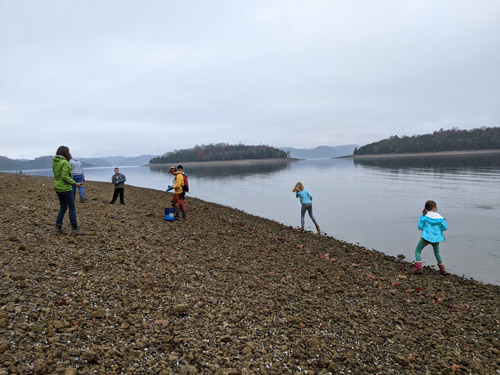
When you are done collecting geodes, it is time to skip rocks
Photo by Lori Carter

Or, just enjoy the view
Photos by Lori Carter

A crooked little geode grin
Photos by Lori Carter
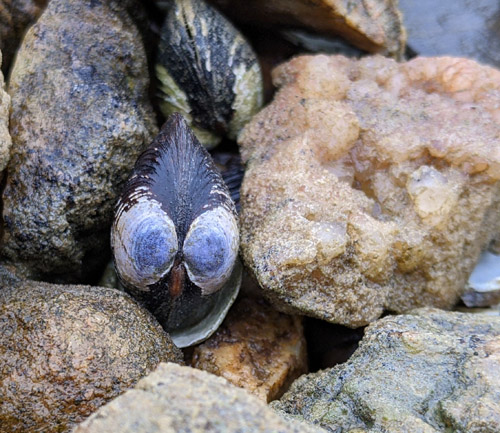
Shell "fish" smiling in the gravel
Photos by Lori Carter
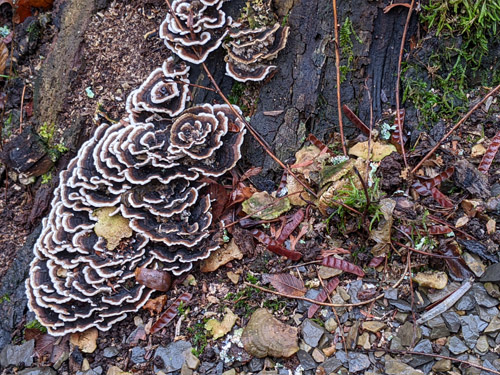
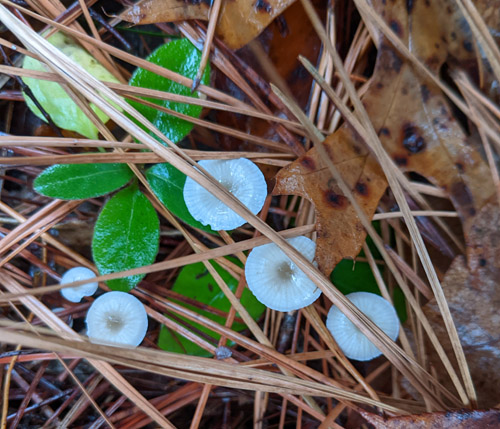
Some fungi we encountered
The Last Night
Photos by Lori Carter
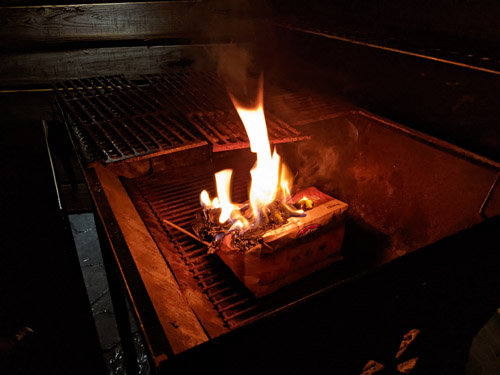

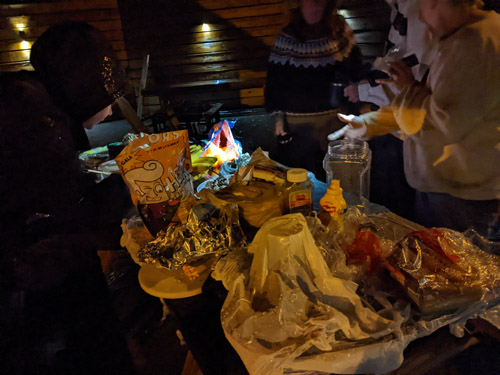
Grilling out the last night at the hotel
Photos by Lori Carter
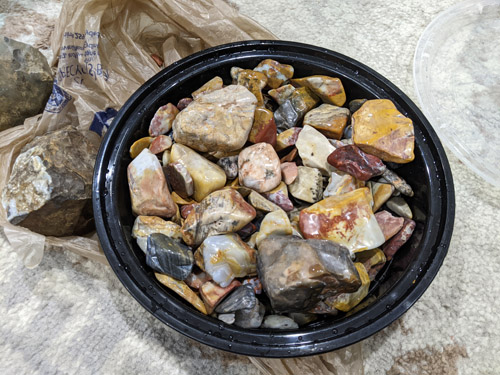
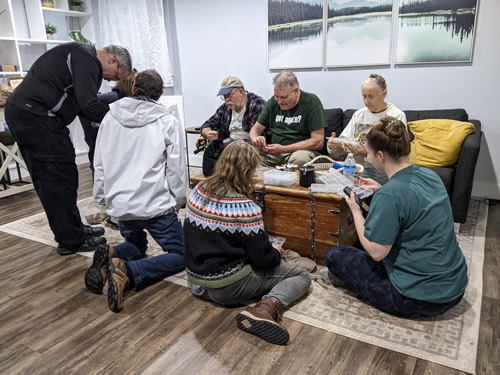
A member shared some Ohio flint, so Charles did a wire-wrapping demo
Click below for field trip policies

Copyright © Georgia Mineral Society, Inc.
